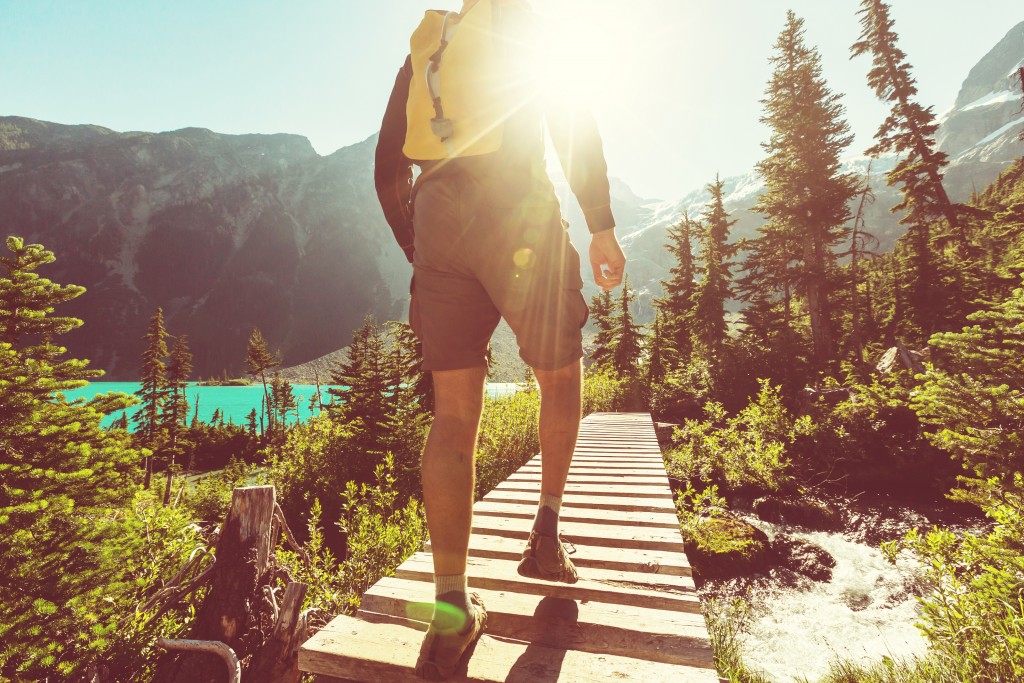The idea of hiking can be terrifying if you’ve never tried it before. Conditions could be harsh and there’s a chance that you might get a little hurt along the way. But don’t let this fear taint your perception of the outdoor activity. Not all mountains are dangerous, and not all trails are made for experienced hikers alone. There are ideal hiking locations for beginners who have been intrigued about the adventure but fear that they can’t make it.
To start things off, you can find the perfect place for hiking activities in countries such as Switzerland, where you can rest in comfortable huts and inns after your hike instead of tents and sleeping bags that may scare you. Now, all you have to do is gear up for the trail.
Go for a Short Trail
For beginners, a trail that can be completed in less than a day is recommended. Trails are not officially rated, but fortunately, there are some rating systems that hikers can rely on, such as the Yosemite Decimal System. In this system, trails are rated according to Class, with Class 1 being ideal for beginners. Trails in this class are well-marked and easy to follow.
There is also the Sierra Club rating system which is primarily based on the trail’s length and elevation changes. Trails rated “Easy” are typically less than six miles long and there are no elevation changes of more than 1,300 feet.
Do Not Hike Alone
There are experienced hikers who love doing it solo, but beginners are strongly advised to have a hiking partner, even better, an experienced one. If you don’t know anyone who hikes, you can join local hiking clubs where you can meet new friends through hiking classes and outings.

Gear Up Properly
Even if you’re only going for a short trail, it would be safer to be equipped with everything on this list:
- Hiking Footwear – Some hikers prefer a pair of supportive over-the-ankle-boots, while others like lightweight running shoes better. For easy trails, lightweight low-cut footwear will be fine. If the trail you’re hiking on has a rocky terrain with roots and streams, then you’d better sport a pair of sturdy boots.
- Clothing – For clothing directly over your skin, wool or polyester fabrics are more suitable than cotton. This is because the two are quicker-drying and moisture-absorbent, qualities that make them good for cold climates. Layer them with nylon or polyester pants, a T-shirt, a sun shirt, and a sun hat. If necessary, wear a jacket or a vest, a fleece pullover, a warm hat, and/or gloves. It would also be wise to carry rain gear, such as a waterproof jacket and rain pants.
Factors to Consider Before Hiking
Your shape or health will probably be the most important factor to consider before you go hiking. If you haven’t been in shape, the Class 1 or easy trails, without question, is your best choice. Think about the amount of time you’re willing to allot for the hike as well. Easy trails won’t take a full day, which is why they’re perfect for beginners. The average pace is around 3 mph, but as a beginner, you may be slower, so consider the elevation of the trail you’re taking. Easy trails have low elevation changes.
Consider the weather before you schedule your hike. In the early spring, some trails may be covered in snow and become inaccessible. In seasons when the sun sets earlier, plan carefully so that you won’t get stuck in a dark trail.
Lastly, plan on the logistics. Some trails have an endpoint different from where you started, so you might need a vehicle to transport you back to your accommodation.
Hiking is fun and it has a lot of known health benefits. Do your research beforehand, so you can have an enjoyable experience that you’d want to repeat.







